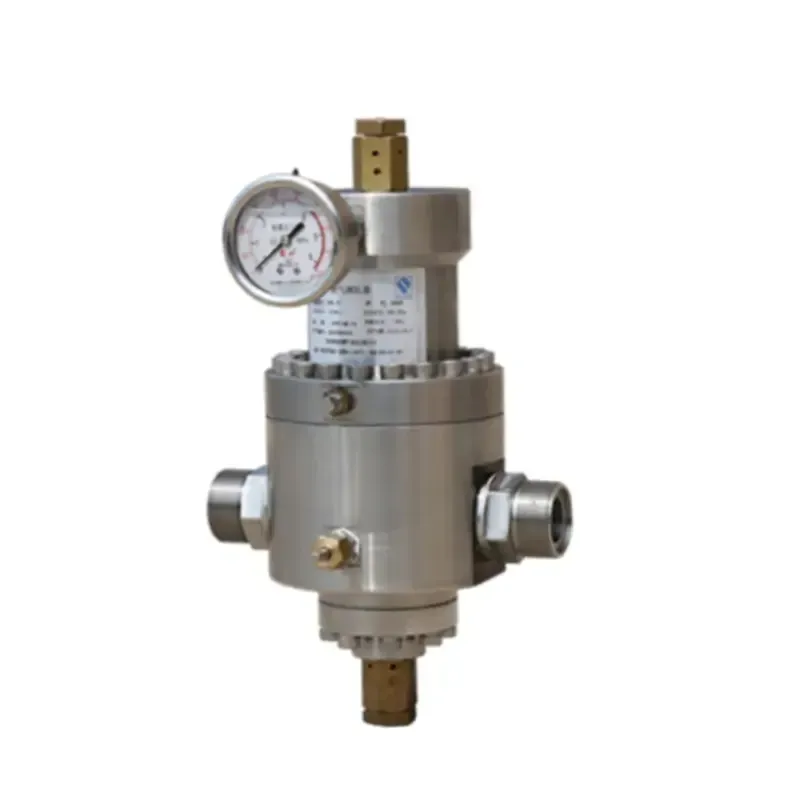
Jan . 02, 2025 07:30
Back to list
natural gas regulator
Understanding Natural Gas Regulators Essential Components for Safe and Efficient Energy Use
Natural gas has become one of the primary sources of energy for households and industries worldwide. Its affordability, efficiency, and comparatively low environmental impact have led to an increasing reliance on natural gas for heating, cooking, and powering various applications. However, the safe utilization of natural gas hinges on the proper function of natural gas regulators—devices that control the pressure and flow of gas from the supply line to residential, commercial, and industrial appliances.
What is a Natural Gas Regulator?
A natural gas regulator is a crucial component in the gas distribution system. Its primary function is to reduce and stabilize the high pressure of the natural gas as it comes from the main supply line before it reaches your appliances. The pressure of natural gas in the distribution pipeline can be significantly higher than what most appliances can handle. Regulators ensure this pressure is reduced to a safe operational level, typically ranging from 4 to 14 inches of water column for most household applications.
How Does a Natural Gas Regulator Work?
A gas regulator operates based on a simple principle of physics maintaining a constant output pressure despite varying input pressures. The regulator does this by utilizing a diaphragm—a flexible membrane that responds to pressure changes. When the gas flows into the regulator, the diaphragm moves in response to the pressure differential between the inlet and outlet. If the downstream (outlet) pressure drops, the diaphragm ascends, opening the valve to allow more gas through. Conversely, if the downstream pressure increases, the diaphragm descends, closing the valve and reducing the gas flow. This automatic adjustment maintains a consistent and safe pressure for the appliances downstream.
Types of Natural Gas Regulators
Natural gas regulators come in various types, each designed for specific applications. The most common types include
1. First-Stage Regulators These are used in high-pressure system applications, primarily to step down the pressure from the main supply lines to a lower intermediate pressure.
natural gas regulator

3. Two-Stage Regulators These combine both first-stage and second-stage functionalities into one unit, improving efficiency and space-saving in installations.
4. Integrated Regulators Used in larger systems, these incorporate additional features like flow measurement and safety shutoff capabilities.
Importance of Natural Gas Regulators
Natural gas regulators not only ensure that appliances operate efficiently but also play a critical role in safety. An improperly regulated system can lead to dangerous situations, such as gas leaks or appliance failures. Too high a pressure can cause appliances to malfunction, potentially leading to safety hazards. Moreover, regulatory compliance is paramount for utility companies. Adhering to standards and regulations helps prevent service disruptions and ensures reliable gas supply, ultimately protecting consumers and infrastructure.
Maintenance and Safety Measures
Regular maintenance of natural gas regulators is essential for optimal performance and safety. Homeowners should be aware of signs of potential issues, such as gas smell or appliances not functioning correctly. Qualified technicians should perform periodic checks, including inspecting for leaks, ensuring that vent lines are clear, and verifying that all safety features are operational.
Additionally, it is crucial to install regulators according to manufacturer guidelines and local codes to minimize safety risks. Gas regulators should be installed in well-ventilated areas and protected from physical damage.
Conclusion
Natural gas regulators are integral to the safe and efficient use of natural gas in our daily lives. Understanding their function, types, and importance can help consumers appreciate the role these devices play in energy systems. By ensuring proper installation and maintenance, we can harness the benefits of natural gas while minimizing risks, contributing to a safer and more reliable energy future. Whether in a home, commercial kitchen, or industrial application, the humble gas regulator plays a superhero role behind the scenes, making modern living possible.
Latest news
-
Safety Valve Spring-Loaded Design Overpressure ProtectionNewsJul.25,2025
-
Precision Voltage Regulator AC5 Accuracy Grade PerformanceNewsJul.25,2025
-
Natural Gas Pressure Regulating Skid Industrial Pipeline ApplicationsNewsJul.25,2025
-
Natural Gas Filter Stainless Steel Mesh Element DesignNewsJul.25,2025
-
Gas Pressure Regulator Valve Direct-Acting Spring-Loaded DesignNewsJul.25,2025
-
Decompression Equipment Multi-Stage Heat Exchange System DesignNewsJul.25,2025

